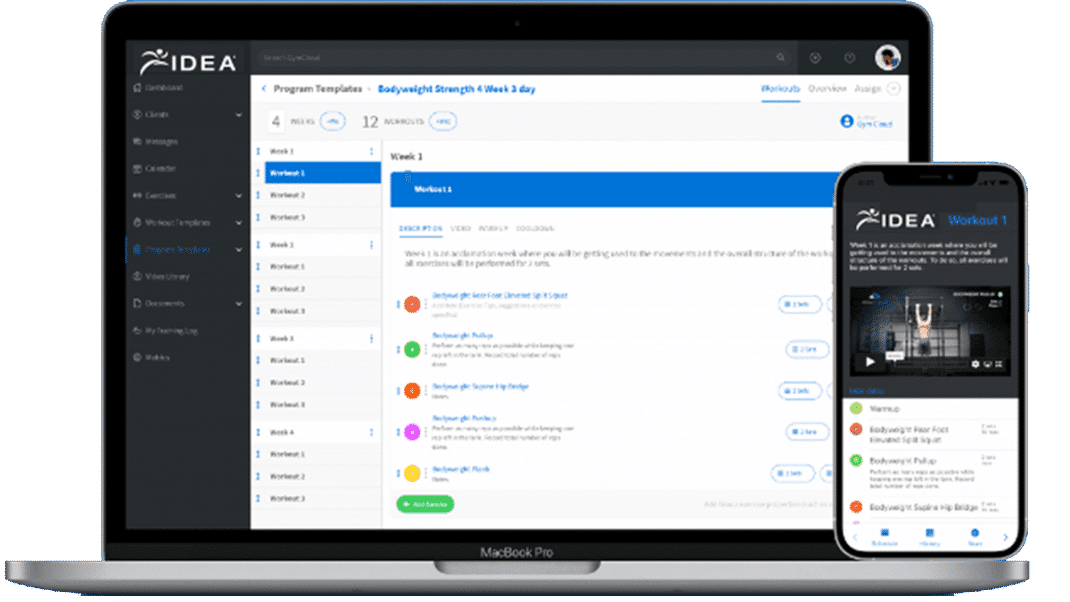Saving a Sinking Ship, Part 1: Bringing Your Business Back from the Brink
The first in a series that teaches you how to save and revitalize a struggling fitness business.

Owning a personal training business can be very rewarding: you can train clients as you see fit, set your own schedule and be your own boss. But being a business owner can also pose significant challenges. Worse still, your big dream could become a nightmare if you let it. While every owner intends to succeed, many will fail and be forced to close up shop for good.
As a business consultant, I have spent more than a decade gaining experience and expertise running my own personal training and fitness-related businesses. I currently teach college-level business and marketing classes, in addition to consulting for business owners around the country.
While each business is different, I’ve noticed that owners share common, almost universal mistakes and challenges. I’m moved by the struggles these individuals face. I’ve had my own share of challenges, struggles and failures along the way, and I understand the sacrifice, discipline and determination that it takes to run a business successfully. Experience has given me the tools to understand how to rebuild a fractured business from the ground up.
This article is the first in a series that will tell the story of a floundering personal training studio, its owners, and my experience helping them go from being in the red to being in the black. I’ll use made-up names in place of the real ones, but the story represents a real-life experience that I encountered as a business consultant.
The Sinking Ship
Jim and Amanda are the owners of Jacked Up Fitness, a personal training studio that is losing money fast. Despite being run by great people who are full of passion for their work, this business will have to shut its doors soon if some things don’t change.
The company’s financial struggles result from a deeper problem. Jim, Amanda and I have agreed that I will identify the root cause of their imminent failure. After performing a variety of assessments, I’ll give Jim and Amanda my solutions for the underlying problems, so Jacked Up Fitness can become a thriving business.
First Impressions
When first assessing a business, I prefer to “go undercover” so I can get a true feel for how things are being run. I complete my initial evaluation before the staff knows who I am and why I’m there, so I can be sure to see the employees’ natural behavior.
Following are my initial impressions of Jacked Up’s aesthetics and customer service, looking at what was done well and what could be done better.
Aesthetics (Scale of 1–10)
- colors = 3 (dark; lacks energy)
- lighting = 3 (dark; lacks energy; inconsistent lighting)
- music = 4 (overly aggressive; not centralized)
- ambience = 6
- organizational appearance = 2 (paper announcements vs. laminate; inexpensive-looking décor)
Customer Service (Scale of 1–10)
- professionalism = 0 (no one at front desk; on-duty employee was working out)
- greeting = 0 (same as above)
- appearance = 1 (staff member who greeted me was in cutoff T-shirt–intimidating to target demographic)
- connection = 3 (friendly, but distant; not interested in my intentions for being at the gym)
- communication = 3 (too much talking and not enough listening)
Total points = 25
Total possible points = 100
Score = 25%
Key Factors
This evaluation may seem harsh, but it allows both the business owner and me to measure components of the business. Just as having goals is part of fitness, having measurable markers is critical to business success. One of my main objectives here is to evaluate measurable conditions. Most owners don’t identify “numbers” or “vital signs” such as those mentioned above. It is hard to adjust an aspect of the business—like dim lighting or bland colors—if the owners have no idea that these can be a deterrent to customers.
To give you an idea of how dire things are at Jacked Up Fitness, here is a standard scoring model I’ve developed during my time as a business consultant: Most successful studios score 80%–90% during my first impression evaluation. Average studios score 70%–80%. Dying studios usually score below 60%.
Core Infrastructure
After gaining my first impression, I meet with Jim and Amanda privately to discuss the core infrastructure—or financial components—of the business.
As I mentioned before, my objective is to identify measurable situations and fix any immediate problems. When businesses are struggling, the owners typically believe the problem can be fixed with marketing: if they just market more efficiently, they will have more customers. However, if the core infrastructure is not up to par, then changing the marketing will not help.
Following is my core infrastructure evaluation of Jacked Up Fitness.
1. Expenses
- What are the totals?
- Where can we save?
- How many members and/or clients does this translate to?
- Note: I’m looking at where money is being spent, how much is being spent and where we can save. A dollar saved is as good as a dollar earned. We need to save money without sacrificing anything that is of value to the current customer base.
2. What are our purchasable items?
- membership
- training
- profit centers
- Note: I’m looking to see where the gym makes money. At Jacked Up Fitness, 25% of revenue comes from memberships, 65% from personal training and 10% from boot camps.
- Note: Ideally these numbers would be tracked and monitored. (I prefer using Excel worksheets to do the calculations.) A tracking system can produce charts and graphs like the one below.
3. How is money collected?
- What lengths of contract are offered?
- Is EFT (electronic funds transfer) offered?
- Are bonus items in place to influence long-term commitments?
4. What is the new-members/loss rate?
- How many new members and/or clients are joining each month?
- How many members and/or clients are leaving each month?
- What is the monthly trend?
Profit Centers and Payment Systems
During my evaluation of the core infrastructure, I look for ways to make things simple and easy to track. Successful facilities have 3–5 purchasable items⎯for example, one-on-one training, small-group training, boot camp, a gym membership⎯and a solid, long-term EFT system. In other words, customers commit to 6–12 months at a time, and money is collected electronically, so the studio owner doesn’t have to ask customers for payment every month. The tracking system monitors all the core infrastructure items mentioned above, which allows the owner to make adjustments and prepare for changes as they come.
At Jacked Up Fitness, I determine that the business has excess expenses in marketing and apparel budget. The business collects money from its personal training and boot camp only. The personal training income is collected from short-term commitments (packages of 5, 10 and 20 sessions), and the boot camp income is collected monthly. Jim and Amanda have no idea how many members/clients they gain and lose each month. Nor do they have any tracking systems in place.
Aesthetics
My next task is to evaluate the aesthetics of the facility. Often, when gym owners spend 10–12 hours a day inside their facility, they develop “gym eyes,” or an inability to see the clutter, dirt and imperfections that are right in front of them. My evaluation of aesthetics will highlight changes—both immediate and long-term—that need to be made to the studio’s appearance.
Following is my aesthetics evaluation of Jacked Up Fitness.
1. Areas of clutter
- BOSU® Balance Trainers (stacked, not racked)
- foam rollers (all over the floor)
- north corner of gym (clutter of dumbbells and functional equipment)
- outdated equipment taking up space and causing clutter
- front desk (too many fliers, business cards, etc.)
2. Gym layout
- Is space being maximized? (no)
- Does gym feel open or crowded (crowded)
- What social aspects are there? (none)
3. Energy
- color (dark)
- lighting (dark)
- music (doesn’t match target market)
Evaluation of the aesthetics and ambience is important. One of the greatest deterrents for potential gym customers is lack of cleanliness. Dark, cluttered facilities are a turnoff. I will need to help the owners create a space that clients and members enjoy spending time in.
What’s Next?
You can see I have my work cut out for me as I help solve the challenges these owners face. Over the course of this series, we’ll look closely at core infrastructure issues, the aesthetics of a cluttered and low-energy facility, ways to fix a broken budget and the lack of tracking systems⎯as well as how to rebrand and remarket Jacked Up Fitness.
See part two in this series here.
Troy Fontana
Troy Fontana is a 13-year veteran of the Fitness Industry. He is CEO of Freedom Fitness Unlimited and founder of Business for Fitness Professionals, an organization designed to educate, inspire and serve the fitness community. Troy is the author of A Climb to the Top and Time Freedom ÔÇô Money Freedom. In 2010, Troy was recognized as a Top 3 "finalist" for IDEA Personal Trainer of the Year Award.





